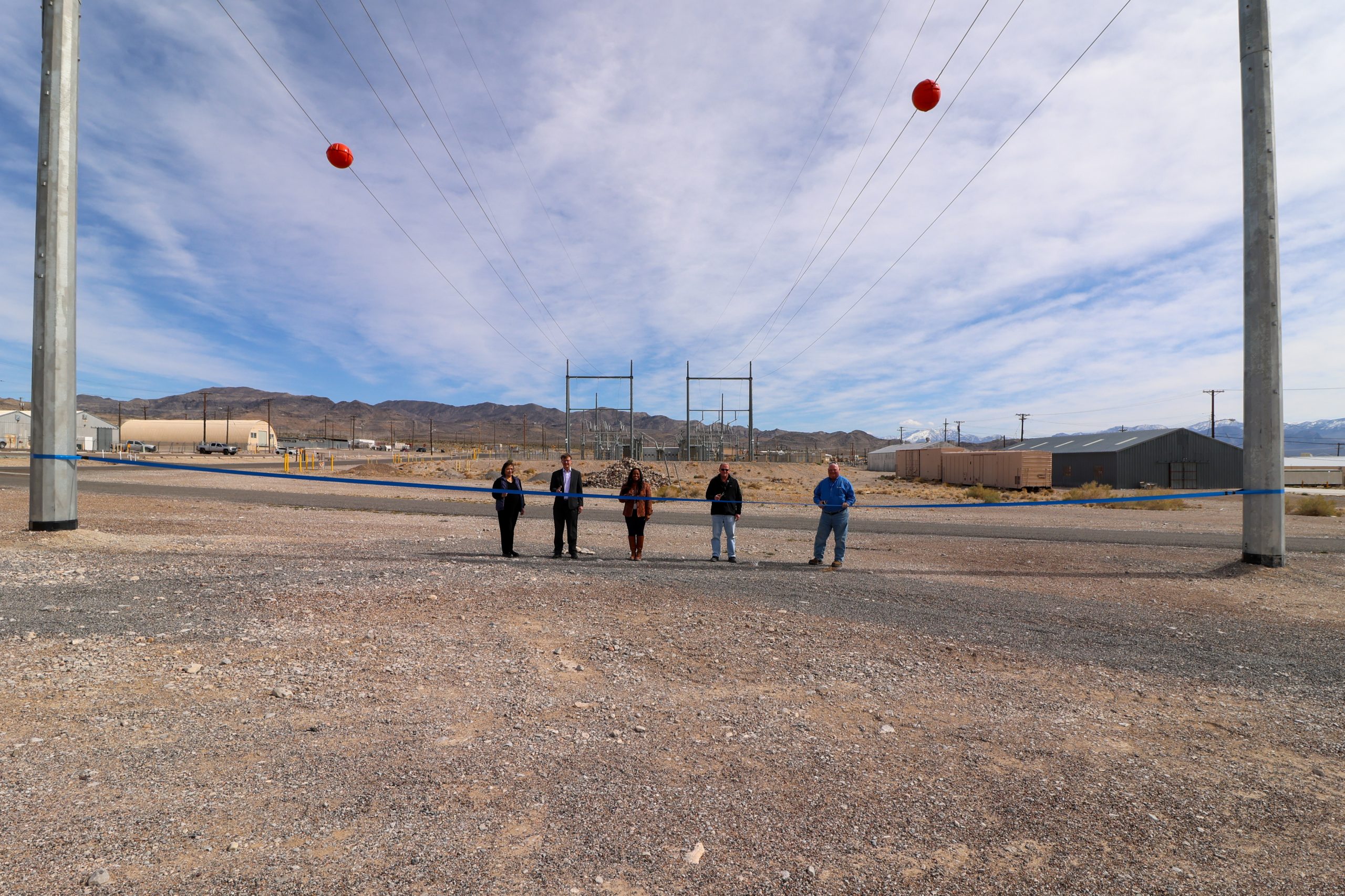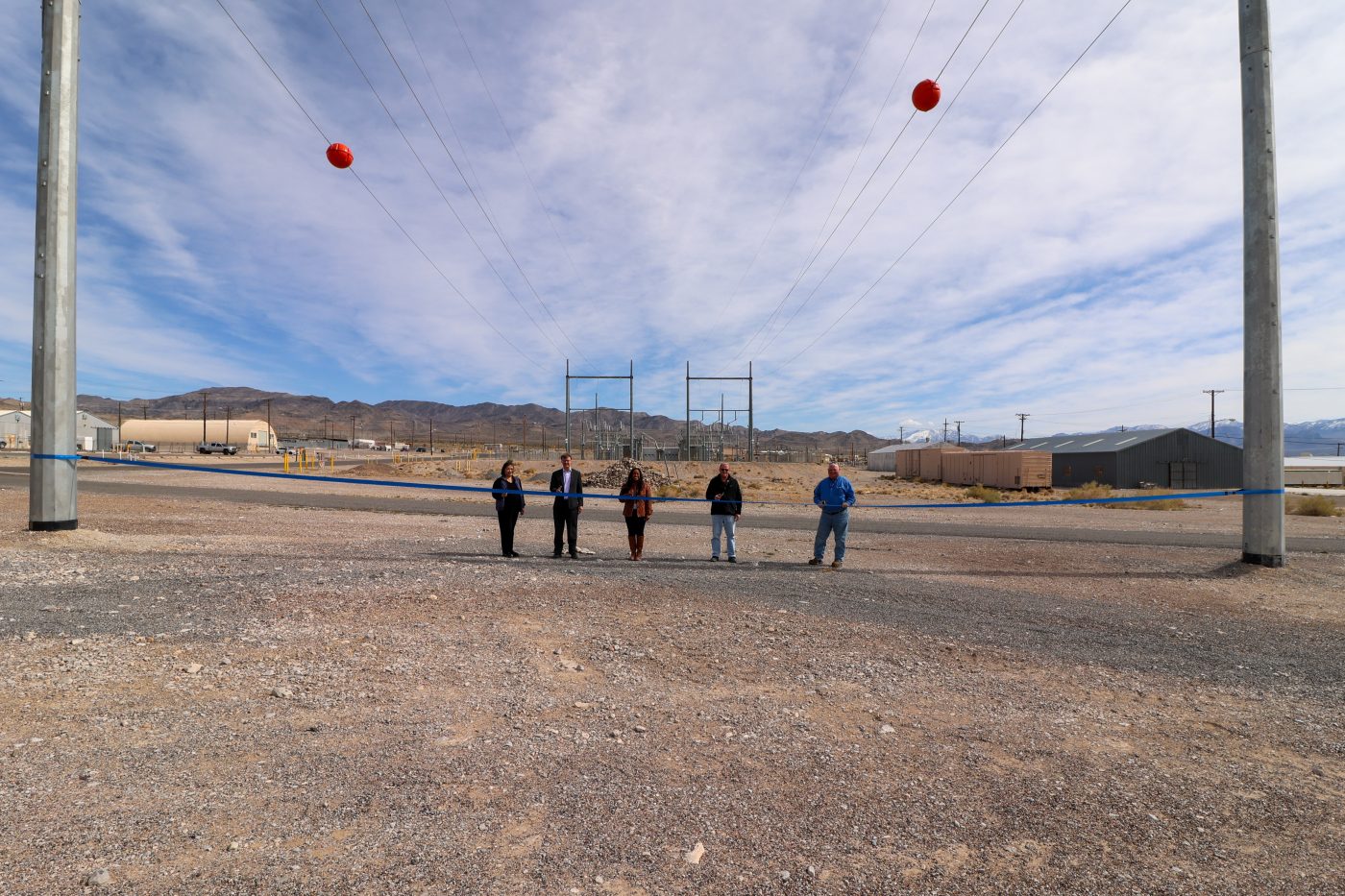
The Nevada National Security Sites (NNSS) marked a major infrastructure milestone with the completion of the 138-kiloVolt (kV) power transmission system replacement (PTSR) project, securing reliable power and fiber optic communications for the Site’s 26-mile mission corridor between the Mercury Switching Station Center to just north of the Principal Underground Laboratory for Subcritical Experimentation (PULSE) complex.
In an example of exemplary collaboration between federal, contractor and subcontractor partners, 406 wood poles were replaced with just over 200 steel poles, power conductor, insulators, and new fiber optic lines.
“This 138 kV project has been an exciting project to be associated with,” said NNSS Project Executive Bart Jones. “For the whole team — the federal team, subcontractor team and MSTS team — the folks who worked this project have made this the absolute easiest project manager role that I’ve ever seen anywhere, any project. They did a super job in executing, planning, and partnering.”
The previous power transmission system was more than 60 years, with aging and corroding wood poles subject to lightning and extreme weather conditions.
“We’re not just replacing like-for-like; we’ve ramped the system up quite a bit,” said NNSS Principal Project Manager Rick Plote, who was the construction subcontract technical representative. “When the original power system was installed in the ‘60s, there was no fiber optic communication line, so we have had to significantly increase our communication and fiber optic capability over time.”
NNSS Infrastructure Senior Director Joel Leeman said, during the March 12 dedication, “Inside our critical site infrastructure, power is right there. It must be there. When you see this thing running up the mission corridor, it is the backbone of the Site.”
Preparation for the multi-year project included extensive environmental, biological, and historic resource considerations. From contracting to construction, the 138 kV installation serves as a benchmark for future infrastructure upgrades for mission-critical work.
“Through the collaboration, the cooperation and the work that’s done by folks with steel-toes on, it makes it possible for folks with lab coats to do what they do,” said National Nuclear Security Administration Associate Administrator for Infrastructure Nicole Nelson-Jean. “This project is an example of what we want the ‘Build SMART Initiative’ to be — involve strategic planning, be mission focused, have agility, and have risk-informed decision making for a timely completion. This project really represents all of the Build SMART areas.”




